Journey to the Roof of the World: My Everest Base Camp Trek
There’s something truly magical about setting foot on the same trail where mountaineers have walked for decades, all with the same end goal in mind: Everest Base Camp and beyond. As I write this, the memories of my 10-day trek still feel vivid, like I have just stepped off the trail and into the warmth of Kathmandu.
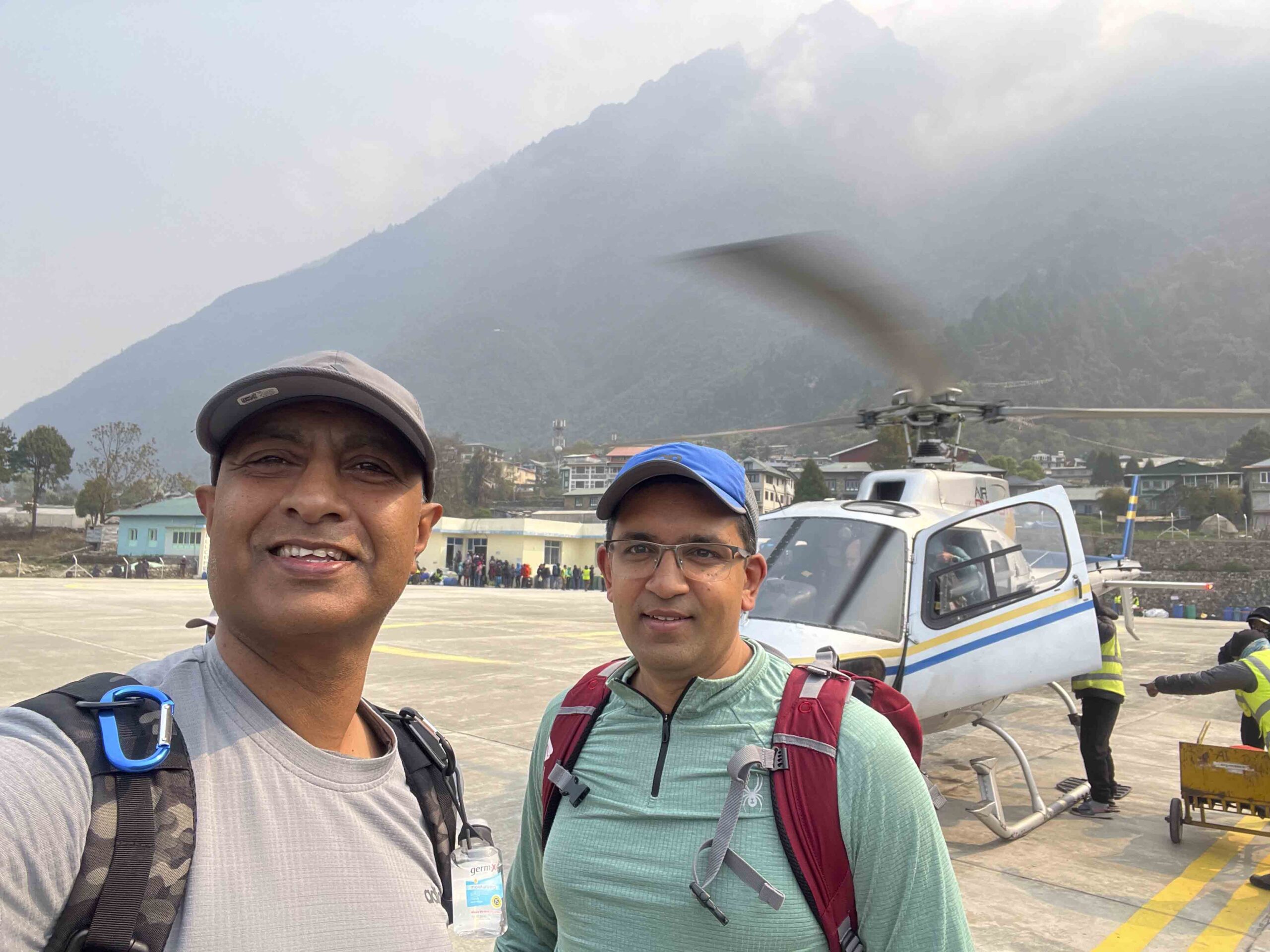
If you have ever dreamed of standing beneath the shadow of the world’s highest mountain, this guide will take you on a journey from the hustle of Kathmandu to the stunning heights of Everest Base Camp.
With a total distance of around 130 km (81 miles), hiking to Everest Base Camp is no small feat. I started my journey to Everest Base camp with my friend Sharath Prasad. It certainly was a trek of a lifetime for both of us and his company and friendship made the journey easier and enjoyable and memorable.
A Glimpse of Nepal: Land of Majestic Peaks and Warm Hospitality
Nepal—where the towering Himalayan peaks stretch toward the sky, and ancient traditions and cultures live on in the rhythm of everyday life. It’s a country that draws people from all corners of the globe, not just for its breathtaking natural beauty, but for the spirit of adventure it inspires. The people of Nepal are resilient, kind, and welcoming, and the Sherpa community, in particular, holds a special place in the heart of the Everest region. Their deep connection to the land, the mountains, and the spirit of hospitality is something that will stay with you long after you’ve left their home.
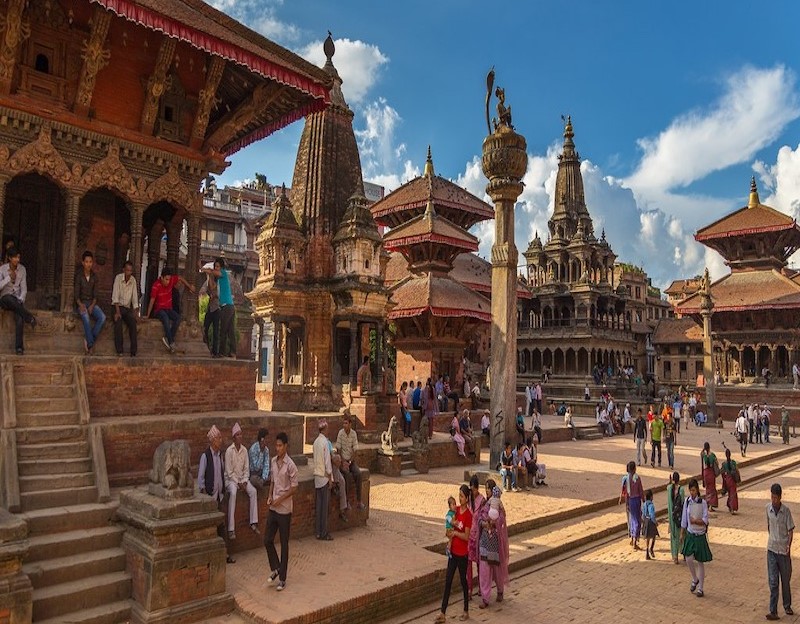
Kathmandu, the capital city, serves as the starting point for most trekkers heading into the Himalayas. The city’s chaotic charm and rich cultural heritage offer a fascinating contrast to the calm and isolation of the mountains. Wandering through its narrow, bustling streets, you’ll find temples and stupas nestled amid lively markets. The energy is palpable—Kathmandu is both the modern gateway and the ancient heart of Nepal. It’s a place where the spiritual and the practical converge, where trekkers from all over the world gather, excited for the adventure ahead, and where the Sherpa people’s humble yet powerful connection to Everest feels woven into the very fabric of the city.
When you stand at the base of Everest, you realize that the mountain is more than just a physical challenge—it’s a place where people from all over the world come to test their limits, to connect with something far larger than themselves. It’s a journey of transformation, and the mountain does not disappoint. It humbles you in ways you can’t quite predict. The sheer majesty of the Himalayas is enough to bring tears to your eyes—tears of awe, of wonder, of realizing how small we are in the grand scheme of things, yet how immense our potential is when we rise to the challenge.
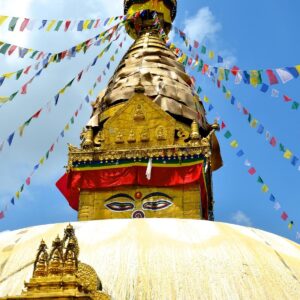
Day 1: Arrival in Kathmandu
Arriving in Kathmandu was like stepping into a different world. The chaos of the airport, with its bustling crowds and the constant hum of life around you, felt worlds apart from the serenity I knew I would soon experience in the Himalayas. The city, with its rich blend of ancient culture and modernity, greeted me with open arms.
After settling into my hotel, we ventured out into the streets of Thamel, Kathmandu’s vibrant tourist district, which serves as a central hub for trekkers. The narrow alleys are lined with shops selling trekking gear, colorful fabrics, and local handicrafts. The scent of spices and incense mingles in the air, and the hum of tuk-tuks and motorbikes creates a lively rhythm. We spent some time absorbing the local atmosphere and preparing for the trek ahead, knowing that Kathmandu would be the last taste of city life for quite a while.
 Day 2: Kathmandu to Lukla, then to Phakding (2,610m) 8562 feet
Day 2: Kathmandu to Lukla, then to Phakding (2,610m) 8562 feet
The adventure truly began with a short but thrilling heli flight from Kathmandu to Lukla. For anyone who has heard about Lukla’s airport, you’ll know it’s infamous for its small, uphill runway, surrounded by steep mountains.
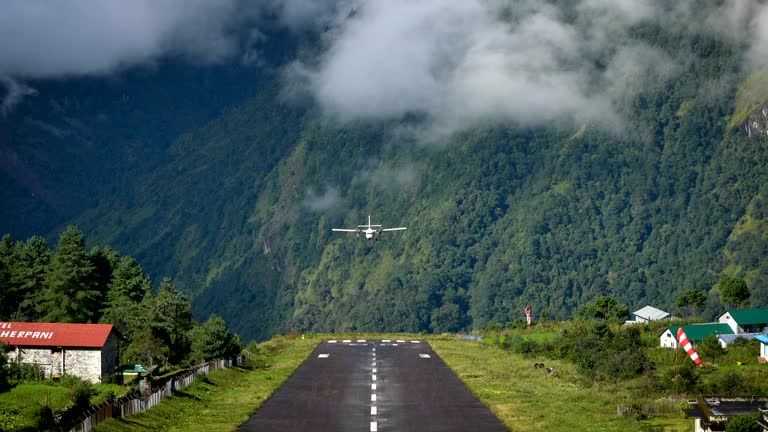
As the plane was delayed for half a day due to weather reasons, we decided to book a helicopter ride to Lulka. Due to rapidly changing weather and short runway of the Lukla airport, aircrafts flying into lukla are often delayed by multiple hours or even days. Every day lost in waiting for flights would mean rescheduling international flights and hotels. For anyone planning a Everest Base camp trip, I would recommend factoring in couple of extra days for flight delays or additional heli costs for flight to and from Lukla.
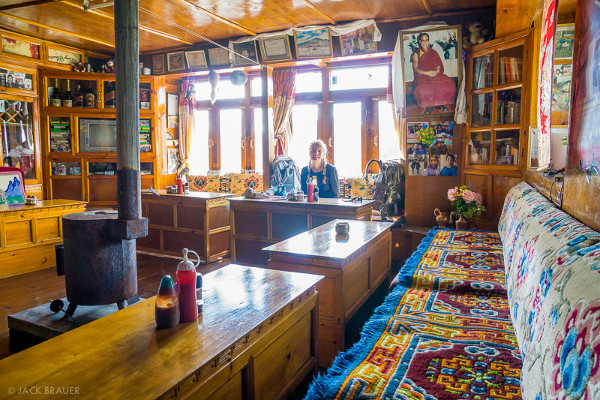
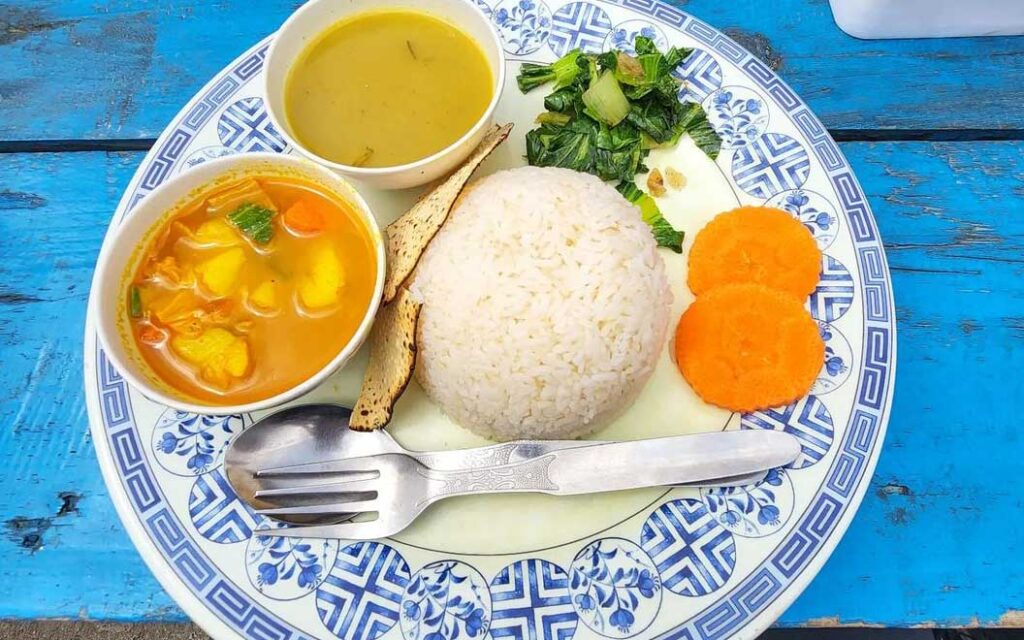
After reaching Lukla, we met our guide and after a quick breakfast we started our trek to Phakding , a 4-hour walk through the beautiful landscapes of the Solu-Khumbu region. The trail weaved through lush valleys and pine forests, crossing suspension bridges over rushing rivers, offering views of the ever-approaching peaks. The air was still thick with the warmth of lower altitudes, and I could already sense the rhythm of the trek settling in.
After stopping at a tea house enroute for lunch comprising of (Daal Bhaat) rice, dal and steamed vegetables, washed away with a large mug of ginger tea, we finally checked into our first tea house- Sherpa Eco House in Phakding.
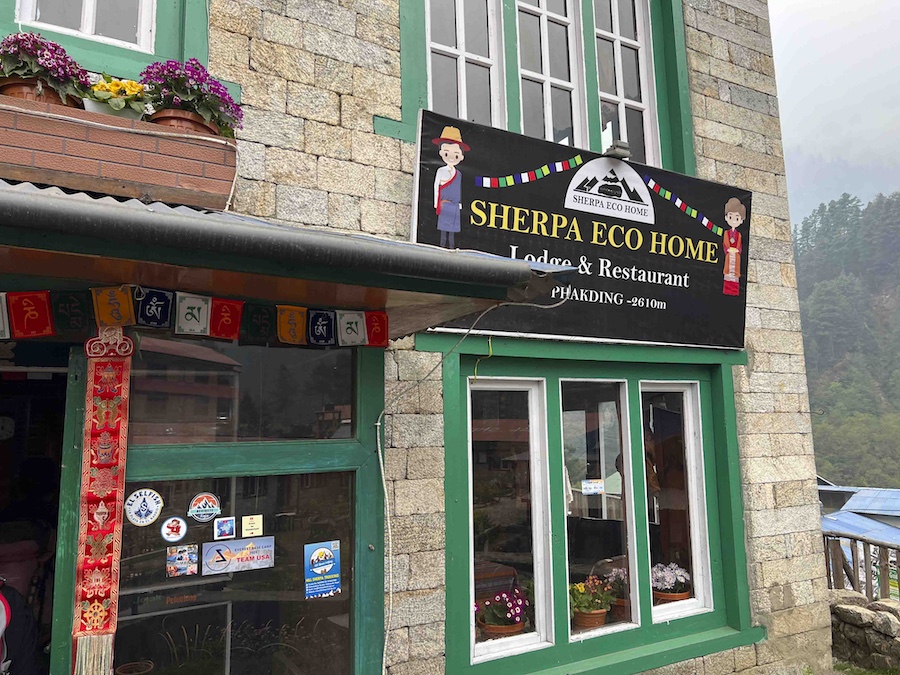
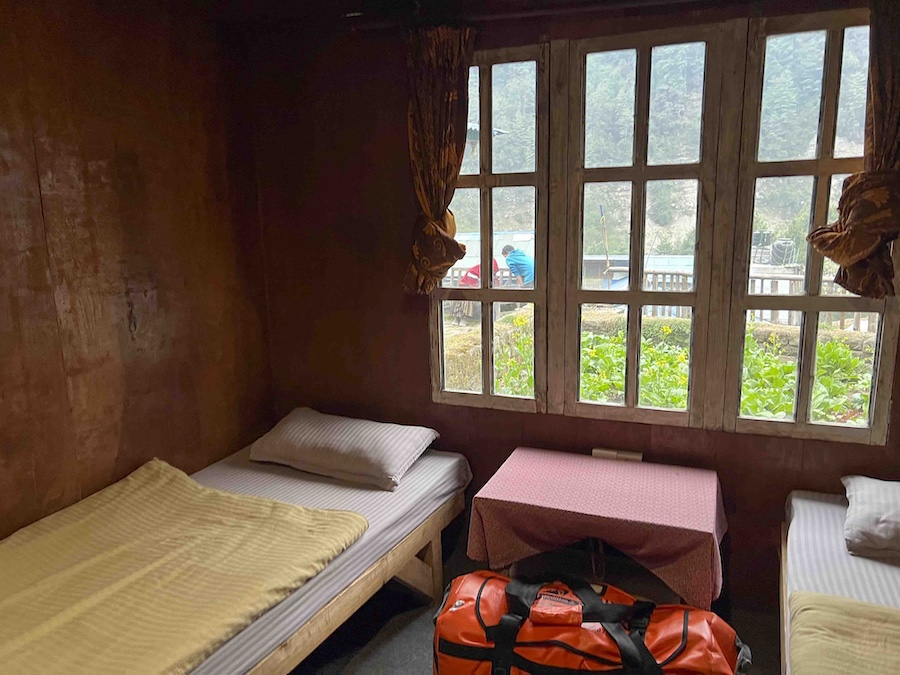
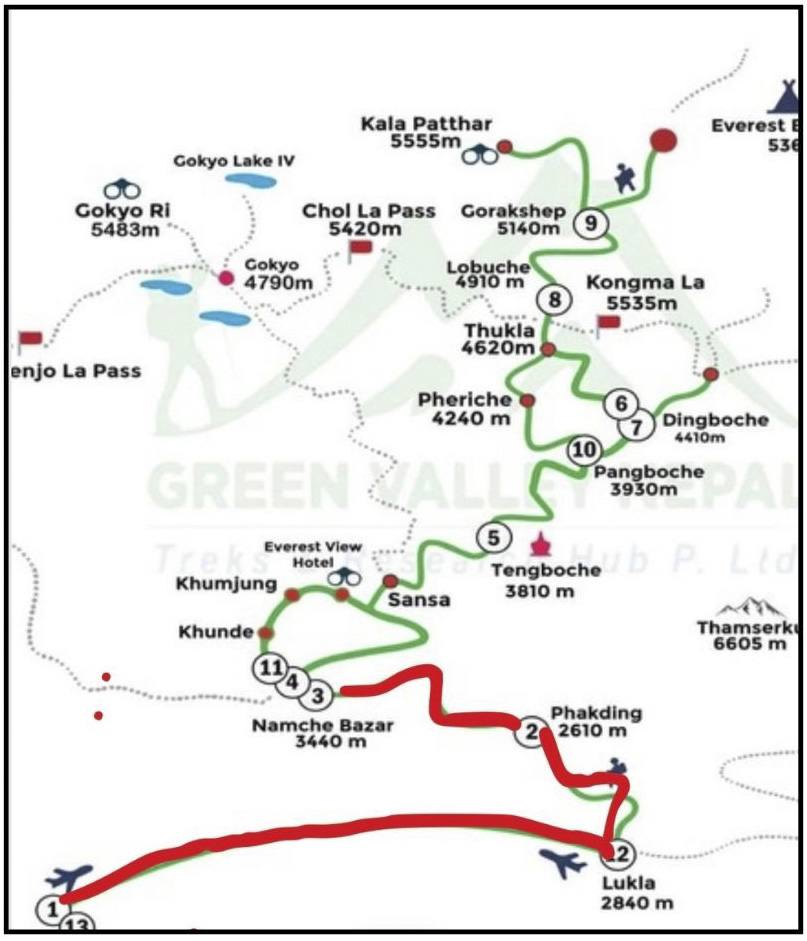
Day 3: Phakding to Namche Bazar (3,440m) 11286 feet
Today was a crucial part of the trek, as we moved from Phakding to Namche Bazar, the vibrant Sherpa town nestled at 3,440 meters. This day was a test of stamina, with a 7 hour hike involving steep ascents, stone steps, and scenic river crossings. As we gained altitude, the air began to thin, but nothing could take away the awe I felt as we entered Namche Bazar. This town is a hub for trekkers and climbers alike, offering everything from trekking gear and night clubs to freshly brewed coffee. The view of the surrounding peaks—including the distant Everest—was awe-inspiring.
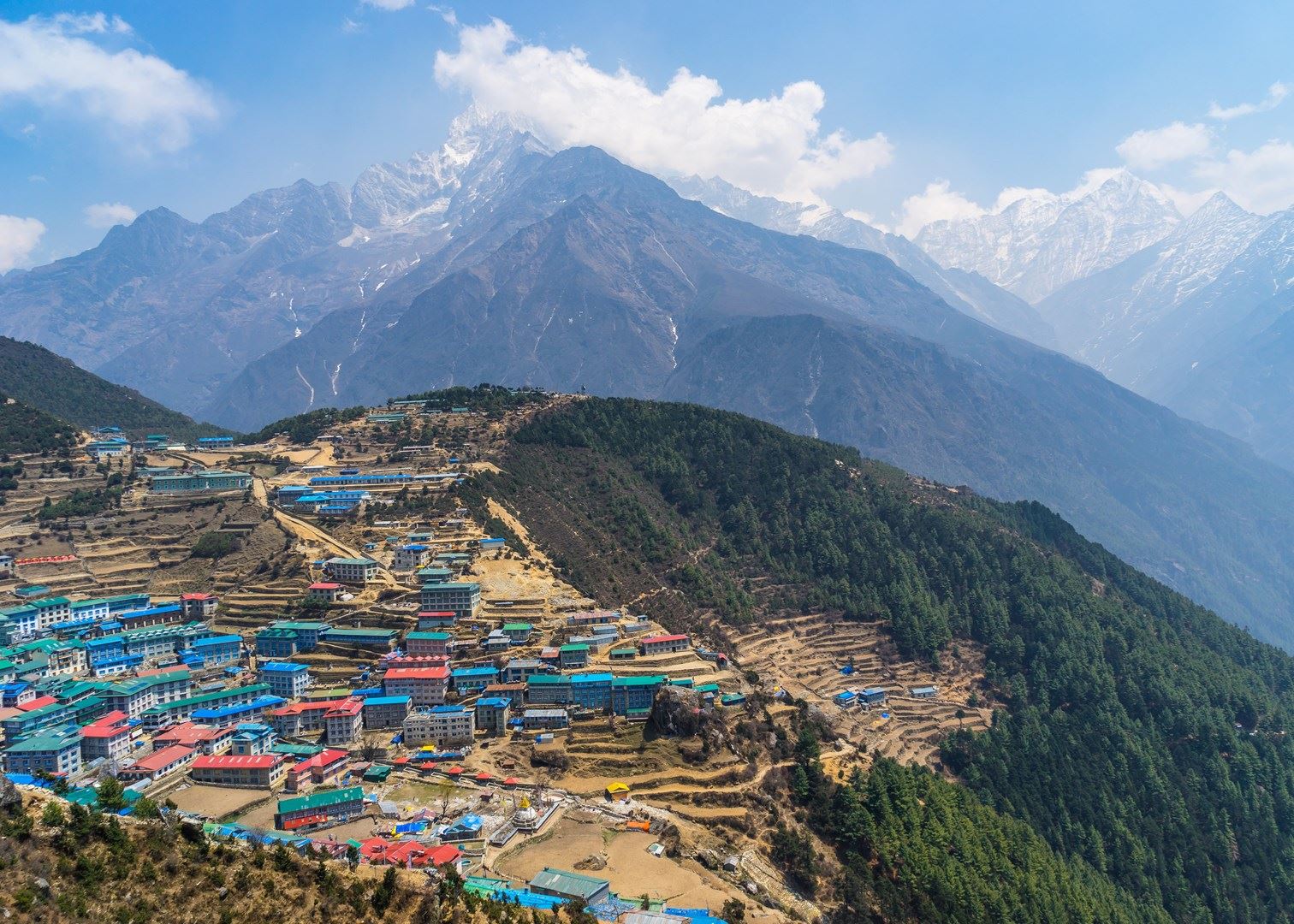
Day 4: Acclimatization Day at Namche
Altitude sickness is a real concern on this trek, so taking an acclimatization day at Namche was essential. The idea was to hike higher to allow our bodies to adjust to the thinning air, before descending back down. According to studies about 25% to 85% suffer from altitude sickness, depending on the elevation and number of other factors including hydration, rate of ascent, previous altitude exposure, etc.
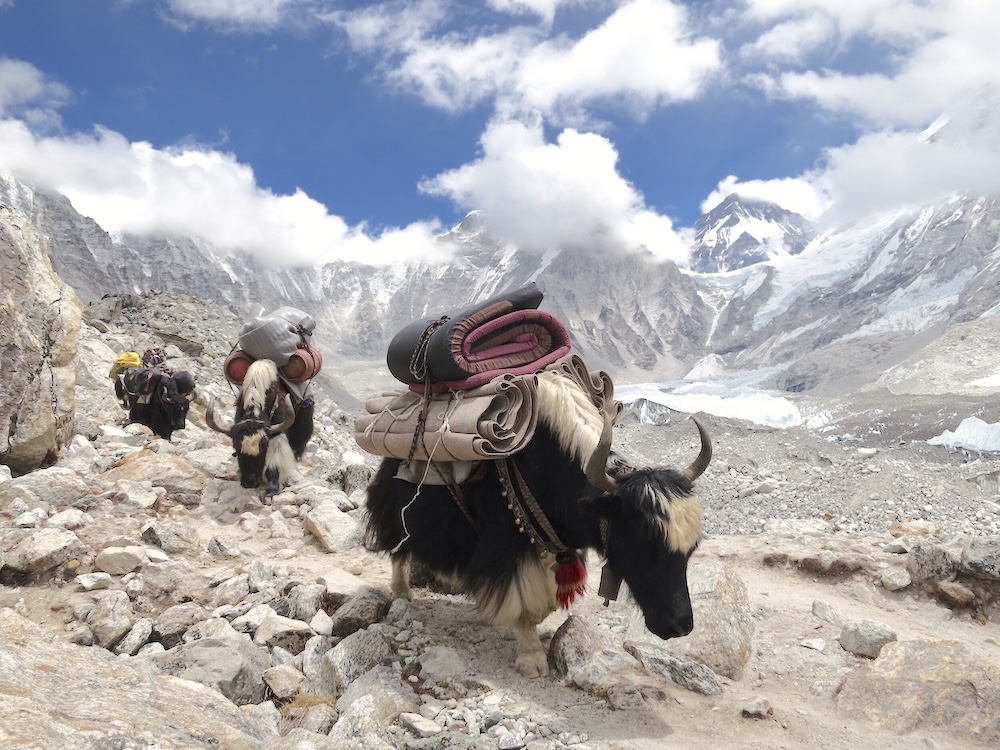
Adequate hydration is key to avoid mountain sickness. About 4-5 litres per day is recommended intake. I had a hydration pack with a capacity of four litres. As the water quality is not predictable in higher altitudes, we purified the water with iodine tablets and then added some flavoured liquid IV to remove the unpalatable taste of Iodine in the water.
We also took Diamox tablets which is a prescription medicine recommeded for avoiding mountain sickness.
After a leisurely breakfast, of paratha (wheat flaky pancakes) and omlette, we set off on a 3-4 hour hike to the Everest View Hotel.
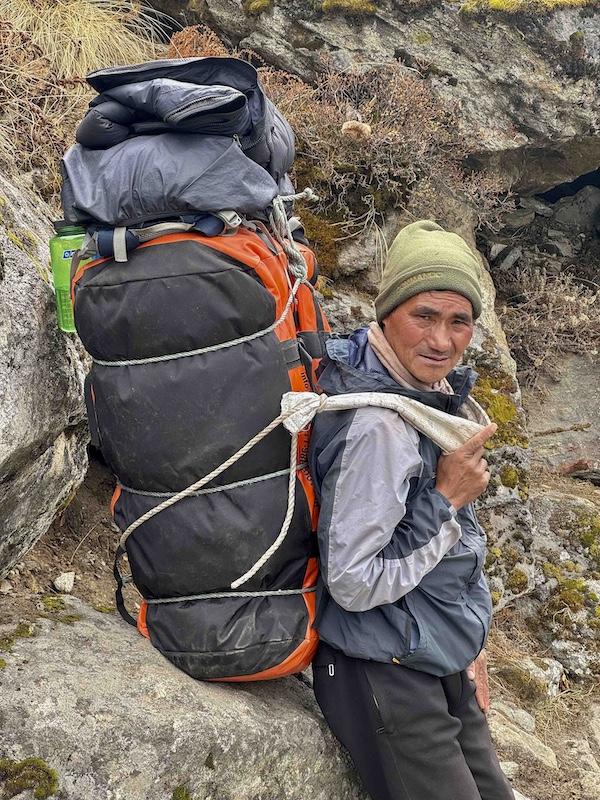
The trail took us through Sherpa villages, where the culture felt deeply rooted in the land. From the hotel, the panoramic views of Everest, Lhotse, and Ama Dablam were nothing short of breathtaking. Standing there, we realized that Everest Base Camp was no longer a dream, but a reality on the horizon.
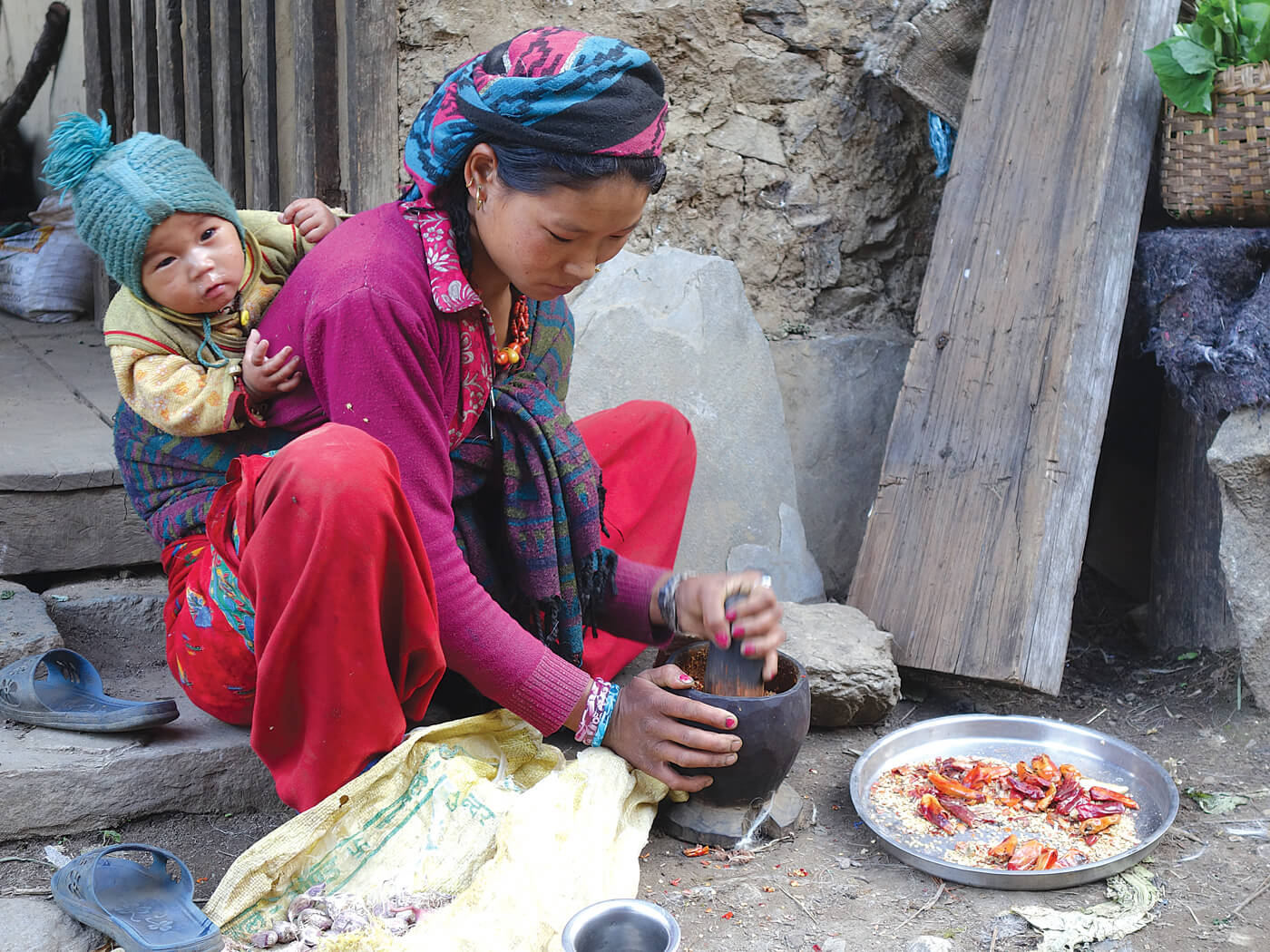

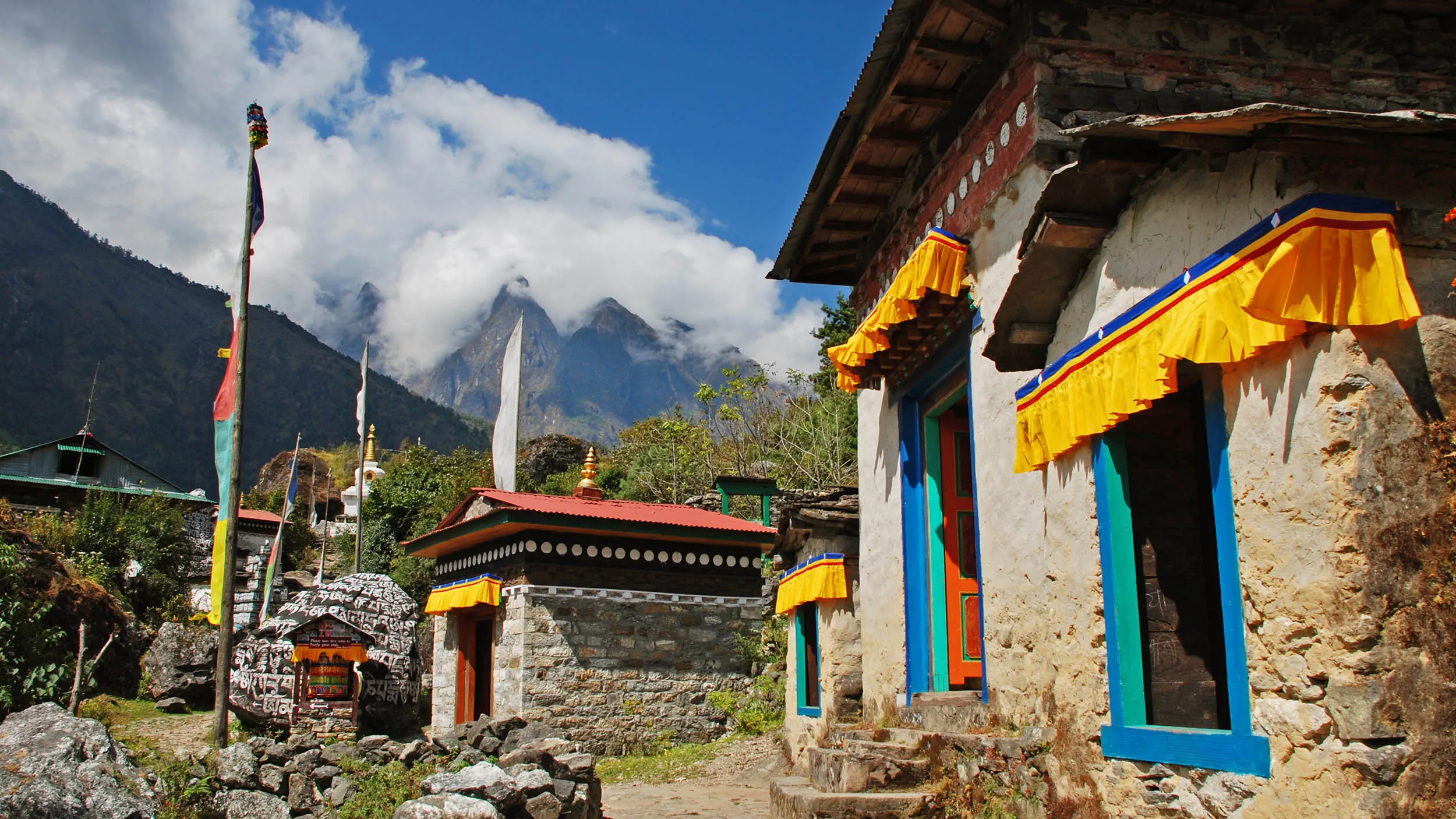
 Day 5: Namche to Tengboche (3,810m) 12500 feet
Day 5: Namche to Tengboche (3,810m) 12500 feet
After a restful night, it was time to push on. Sleep is now a challenge in the night due to dropping oxygen levels around midnight at these altitudes and then it is difficult to go back to sleep.
Today’s trek was about 7 hours, and we descended from Namche before beginning the climb toward Tengboche, home to the famous Tengboche Monastery. The landscape changed as we moved higher, the lush green forests giving way to more barren terrain with occasional sightings of wildlife.
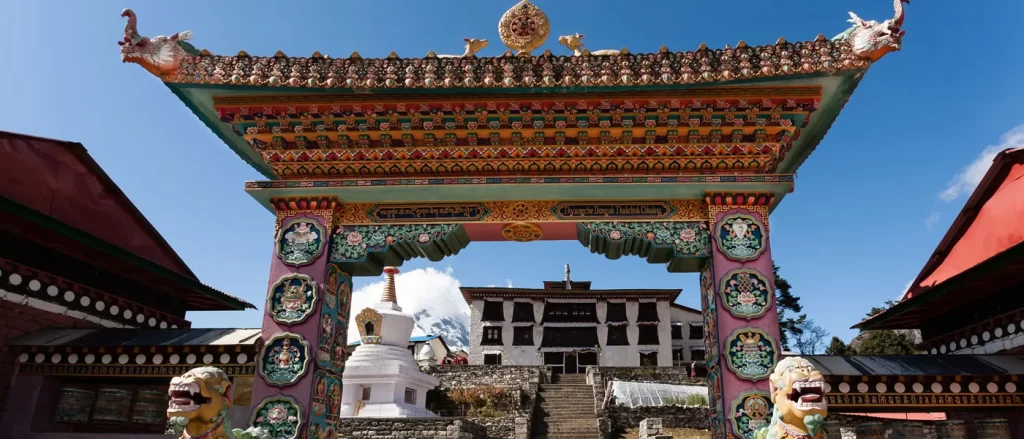
At Tengboche, we were treated to some of the best mountain views on the trek. From this vantage point, you can see Everest in all its glory, towering above the surrounding peaks, as well as Lhotse (the fourth-highest peak in the world) and Ama Dablam, one of the most distinctive and beautiful mountains in the region.
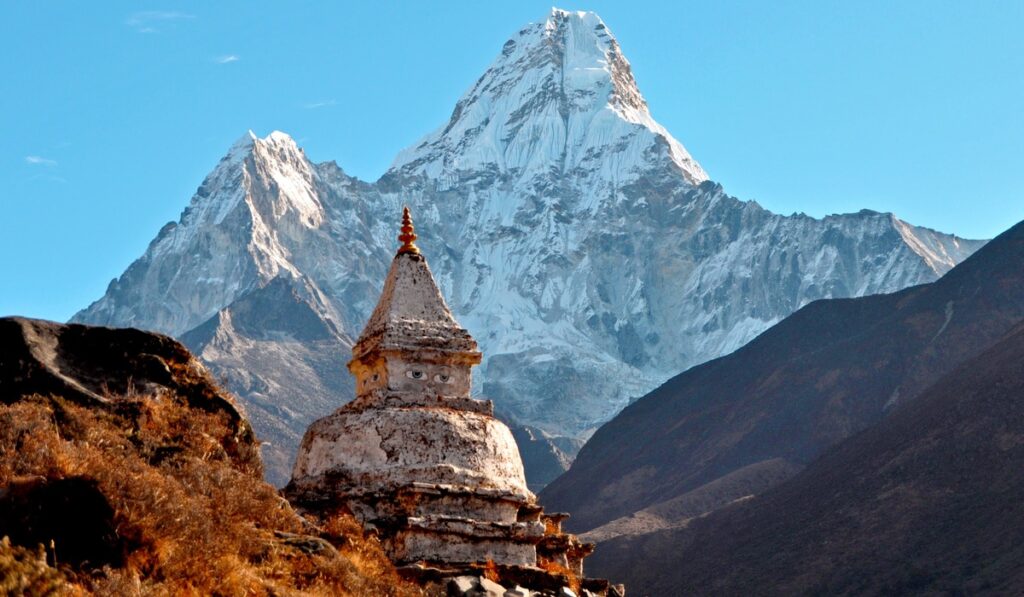
The jagged ridgelines and snow-capped peaks set against the clear blue sky left me in awe of the raw, untamed beauty of the Himalayas.
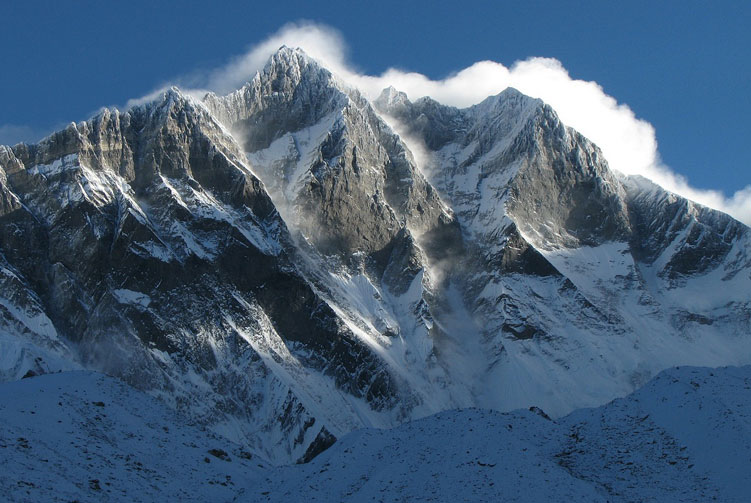
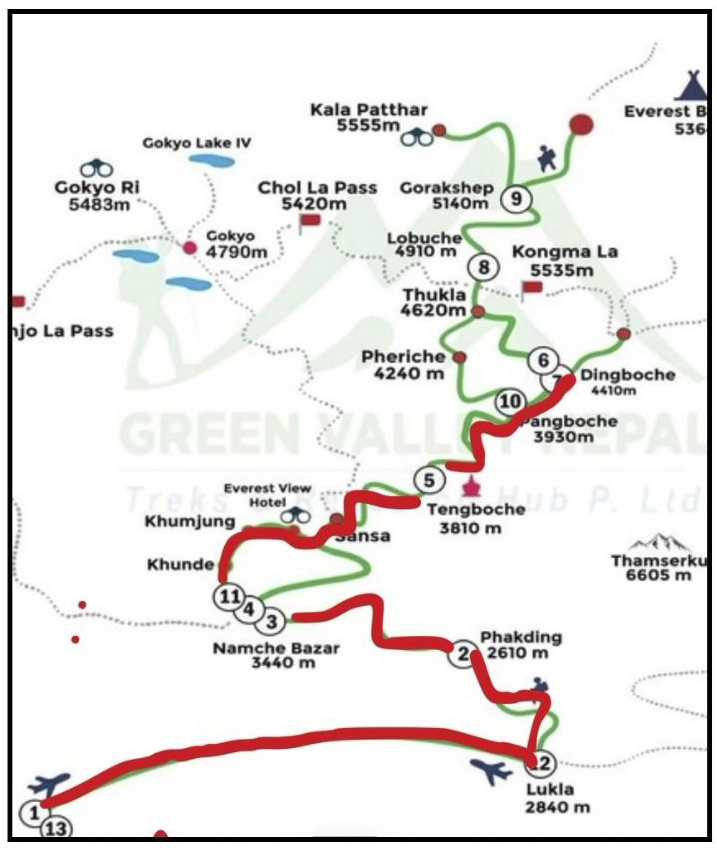
Day 6: Tengboche to Dingboche (4,360m) 14304 feet
Another big day of trekking lay ahead today, with a 6 hour hike to Dingboche. As we ascended, the terrain became more rugged, and the wind grew colder. Down jackets are now out of the backpacks and I also carried a set of comfy hand warmers.
The mountain views became ever more dramatic, with Everest, Lhotse, and Nuptse visible in the distance. Nuptse, the massive mountain bordering Everest’s southern face, is one of the most imposing mountains in the region and provided a stunning backdrop as we made our way toward Dingboche.
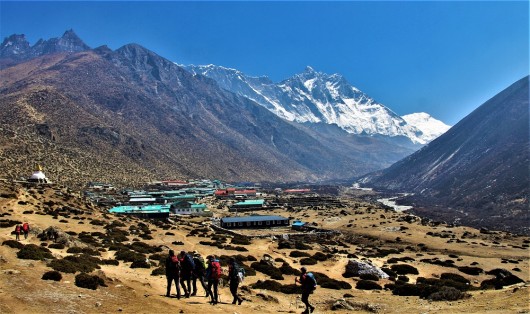
Dingboche itself is a quiet, peaceful village, and I was struck by how isolated it felt. Here, I could finally understand the life of the people who live in the shadow of Everest. The evenings were chilly, but the warmth of the guesthouses and the camaraderie of fellow trekkers provided a welcome contrast to the cold.
The sleeping rooms are very cold and dark , so we try to hang around till bed time, in the dining area for the warmth of the fireplace and sip on hot liquids like ginger tea.
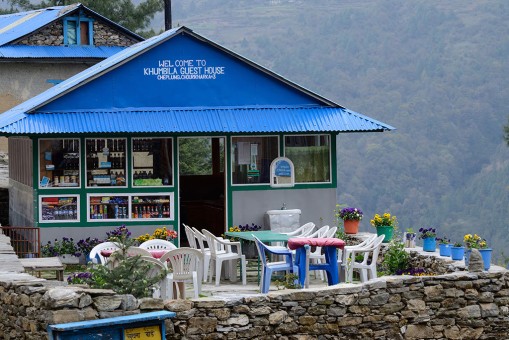
Day 7: Acclimatization Day at Dingboche
Another crucial acclimatization day. We set out on a 4-5 hour hike to a higher altitude and then descended back to Dingboche. Our goal was to help our bodies adjust to the new altitude before making the final push.
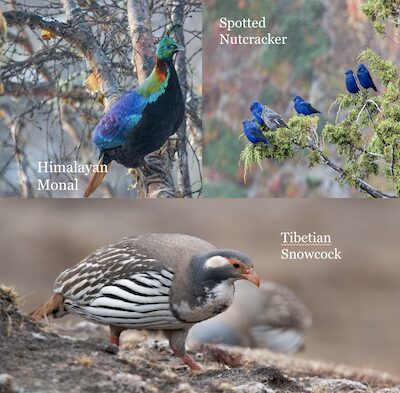
As we climbed higher, the landscape grew more barren, with fewer trees and more alpine scrub. Along the way, we were treated to awe-inspiring views of Pumori, a striking pyramid-shaped mountain that towers over Dingboche at 7,161 meters. It felt like we were gradually closing in on the high-altitude terrain that surrounds Everest.
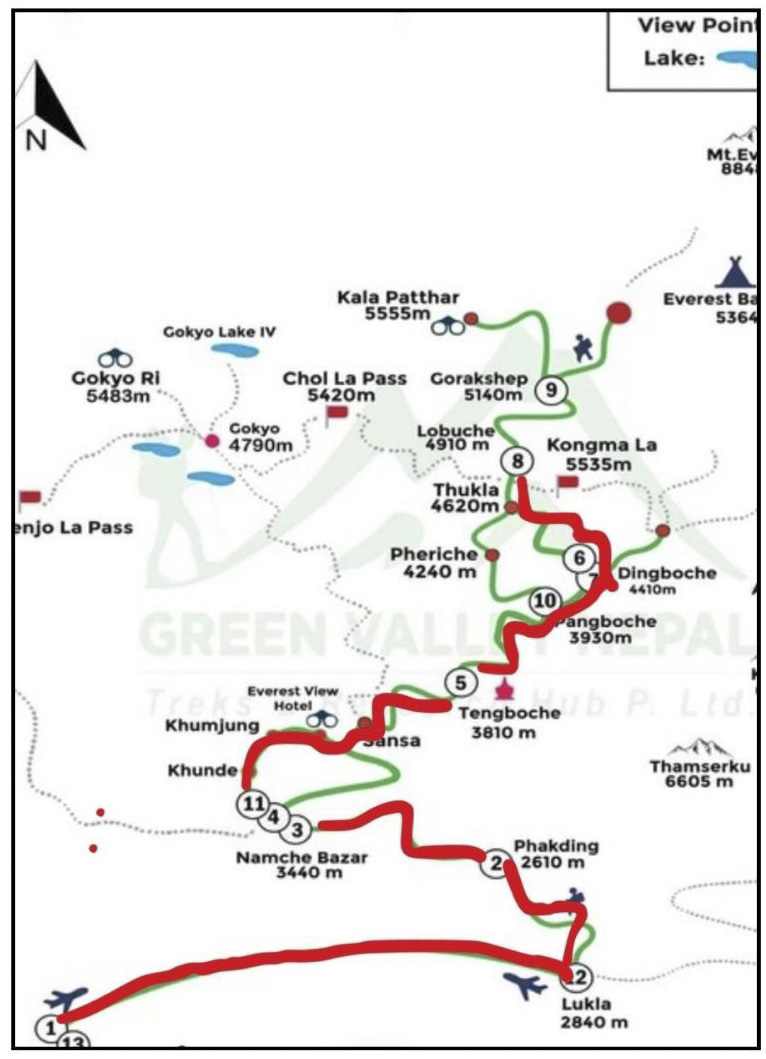
Day 8: Dingboche to Lobuche (4,930m) 16174 feet
The trail to Lobuche was shorter than previous days, but the altitude made it challenging. A 4-5 hour hike took us up into a rocky, desolate landscape. Due to low oxygen levels the breathing was very labored and every step took a lot of effort. We had to stop and catch our breath every 50 metres of so based on the inclines .
As we neared Lobuche, I couldn’t help but think of the mountaineers who come this way on their quests to summit Everest. The Everest memorial near Lobuche remembers the fallen climbers . This memorial is a testimony to the human spirit and also teaches us to be careful and respectful of nature.
The towering mass of Pumori and the sharp edges of Khumbutse and Lingtren added an intense, dramatic backdrop to the trek, making every step feel more significant.
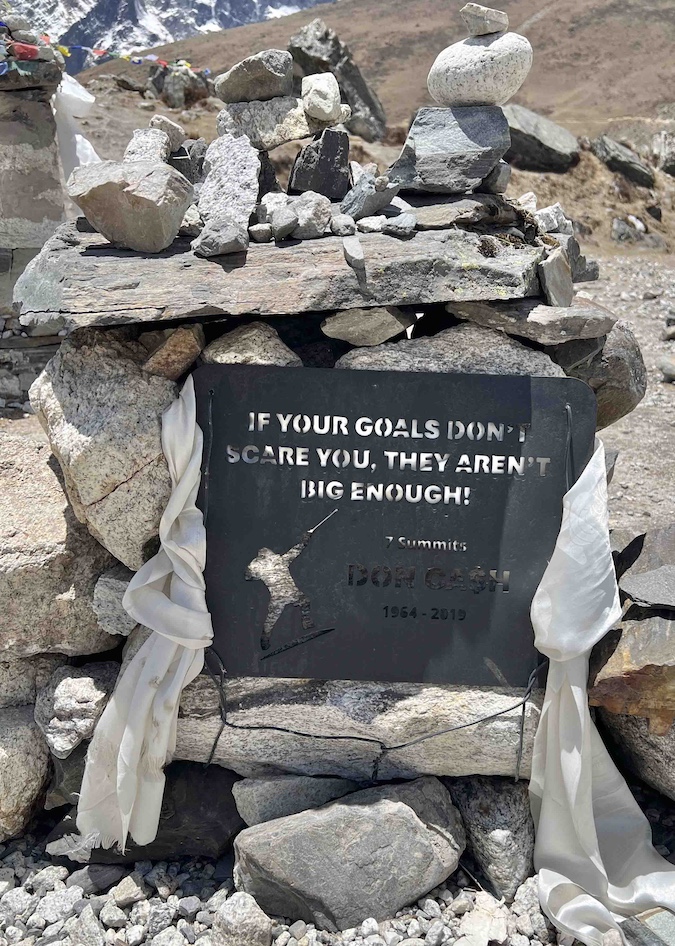
Lobuche itself is a small settlement with a few guesthouses, but the views of the mountains surrounding it more than make up for its lack of amenities. The thin air made it hard to climb, but I knew we were on the right track.
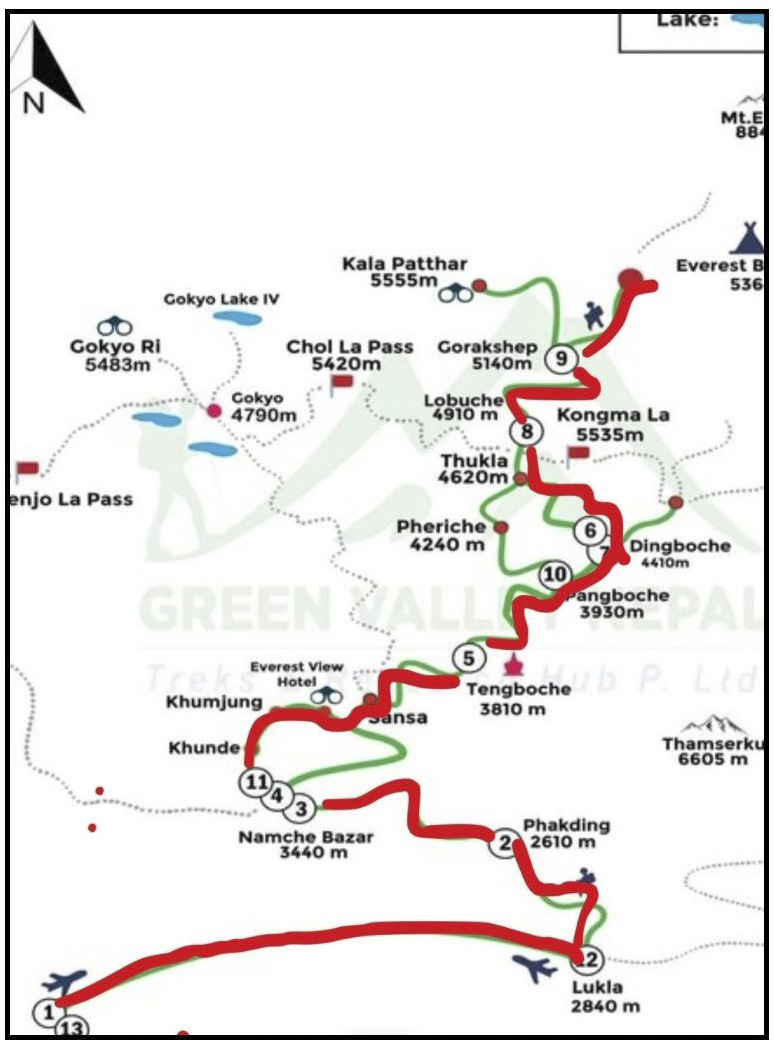
Day 9: Lobuche to Gorakshep (5,160m), then to Everest Base Camp (5,360m) 17585 feet
Today was the day we’d all been waiting for: the trek to Everest Base Camp. It took a grueling 7-8 hours of hiking to reach Gorakshep, the last stop before the Base Camp.
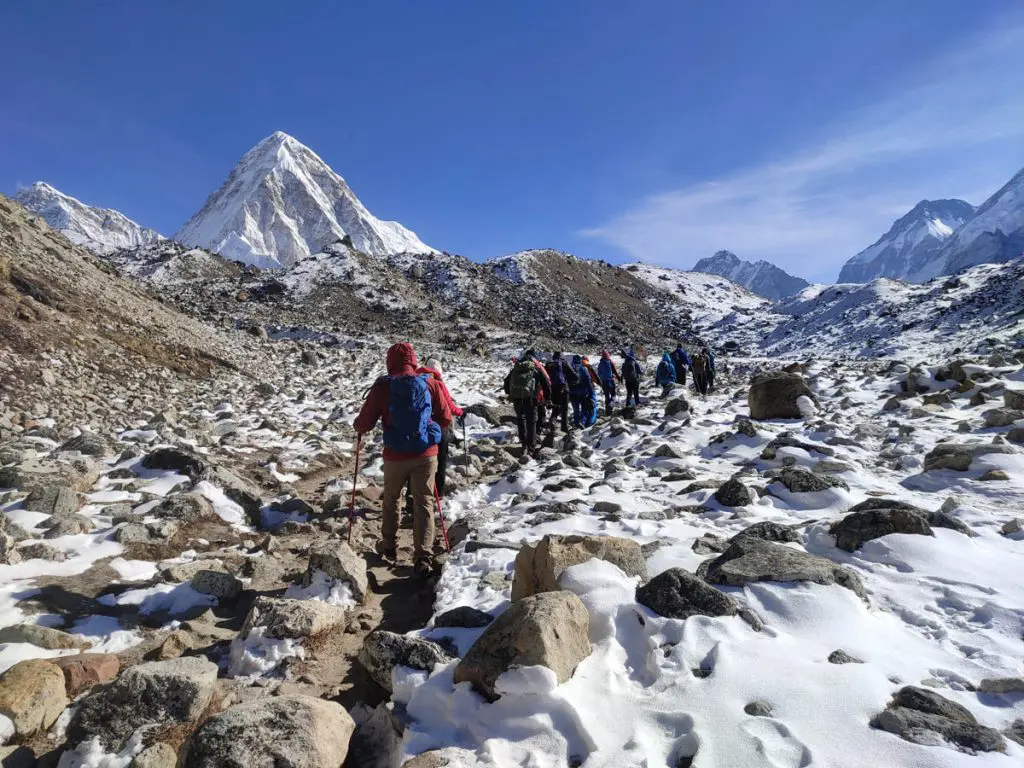
The terrain was harsh with climb over big boulders and no trail to follow. Midway during the trek , the weather suddenly changed and it started snowing. We pulled out our waterproof jackets to protect the down jackets and ourselves from getting wet. We had to be carful not to slip and fall into crevices between the boulders or sprain ankles.
From Gorakshep, after a quick lunch and rest, we continued on a rocky, uneven path that led us to the iconic Everest Base Camp.
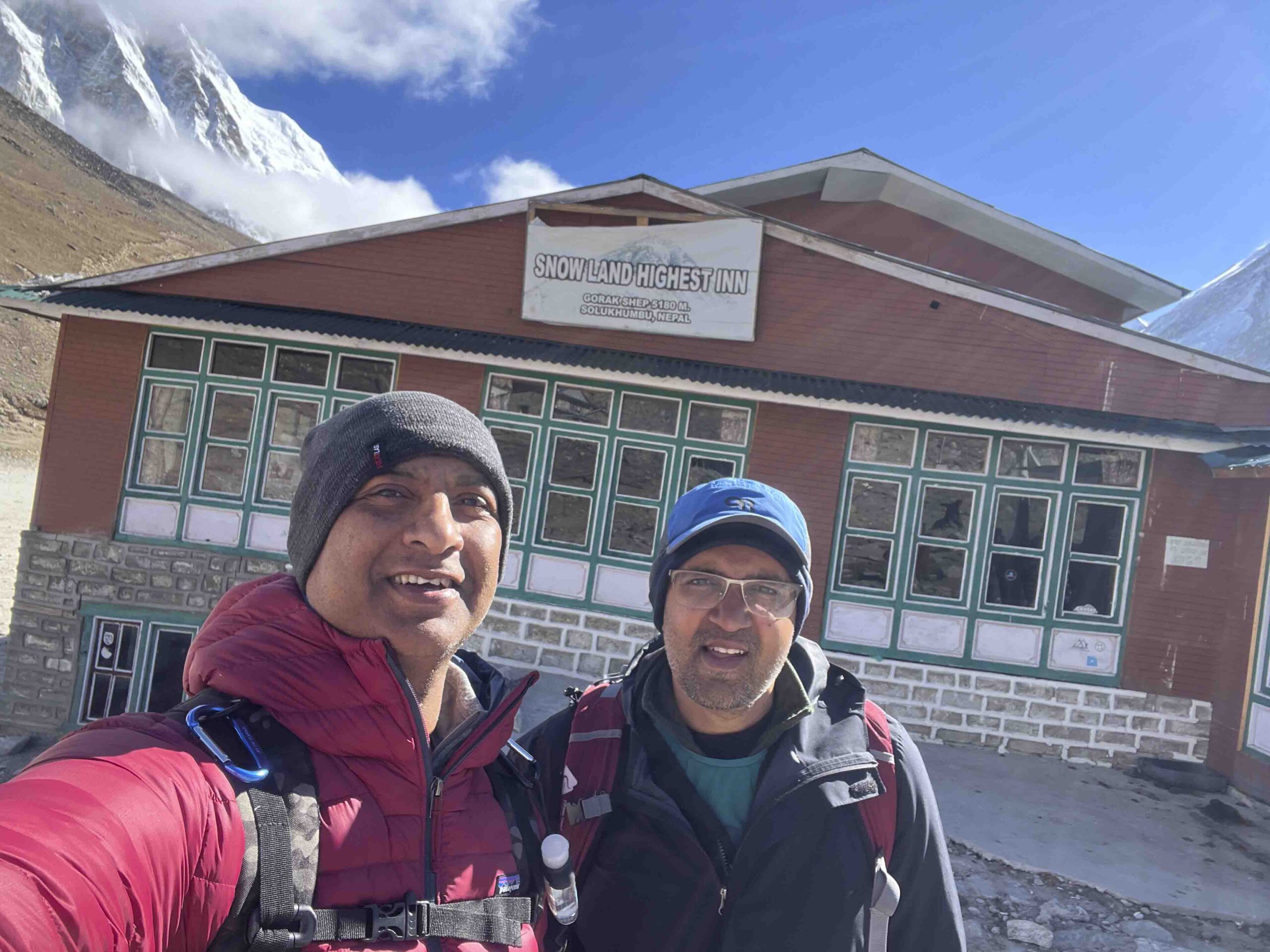
The sheer size of the mountain, looming in the background, was humbling. As we got closer to the base camp, we high fived joyous climbers returning from the base camp. We could see the base camp from a distance but our tired lungs and legs struggled to walk.
After what seems like hours we finally were in touching distance of the Base camp. It’s a place where dreams are made and realized. Standing on the base camp hill, surrounded by prayer flags and the roar of glaciers, I couldn’t help but feel a sense of awe and felt huimbled. I had made it to the base of the world’s tallest mountain.
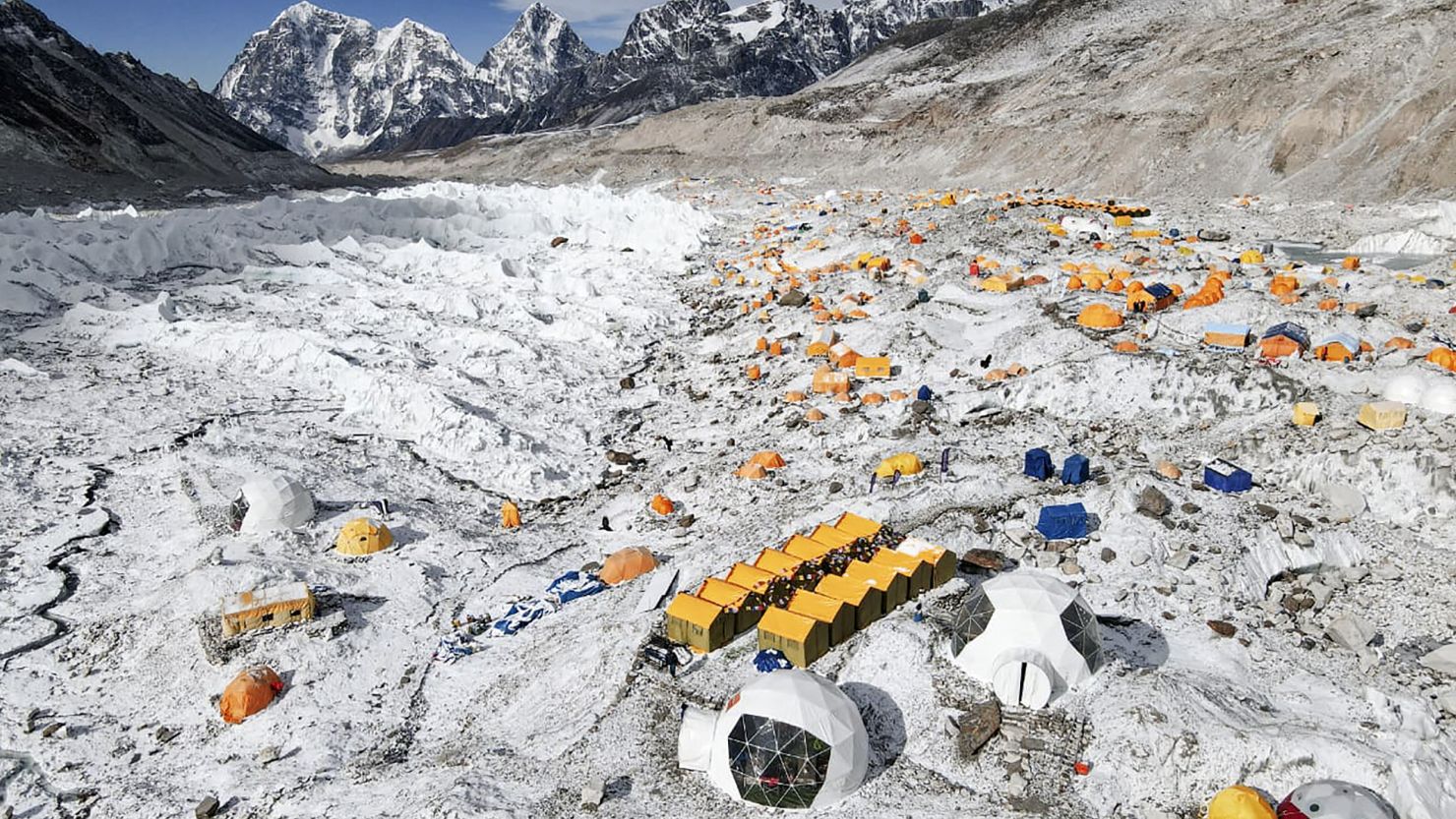
The energy at Base Camp was palpable, a mix of triumph and reverence. The realization hit me: people from all walks of life come here to challenge themselves in the face of one of the world’s most formidable natural wonders. From novice trekkers to experienced mountaineers, everyone shares the same goal—to stand in the presence of Everest, to feel its overwhelming beauty, and to push the limits of human endurance.
The sight of Everest bathed in the golden light of the setting sun was unforgettable. I stood there, mesmerized , as the mountain seemed to grow larger and more magnificent with each passing minute. It was a moment that brought tears to my eyes—tears of wonder, of exhaustion, and of gratitude for having made it this far.
After spending some time soaking in the view and taking photos, we began our return back to Gorakshep and then descend back the next day. Instead of spending three more days returning on the paths we climbed on, we decided to get a helicopter ride back from Gorakshep and were in Lukla in less than 40 minutes.
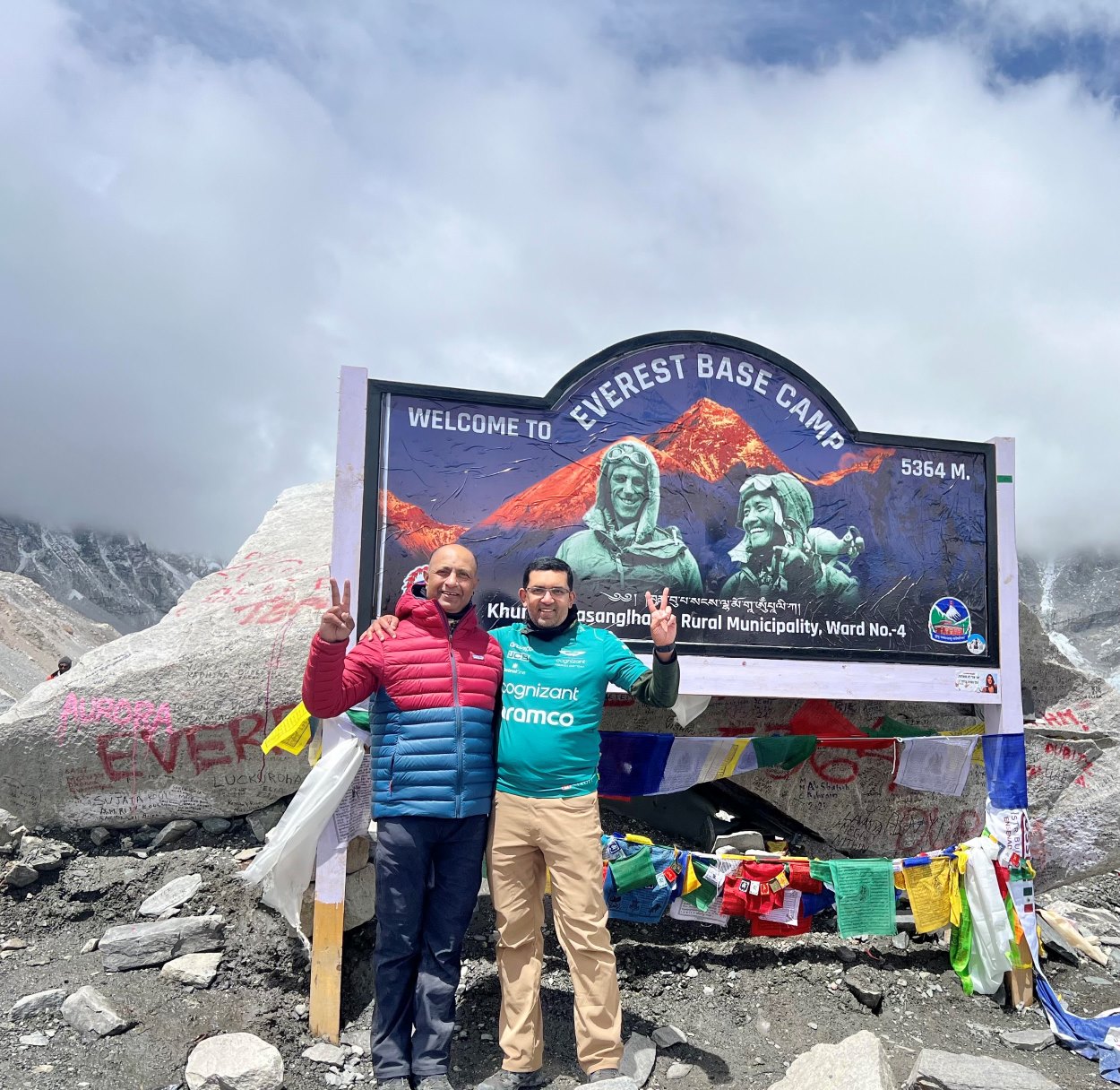
Reflection
Reaching Everest Base Camp was a monumental achievement, but it was also a deeply personal journey. The physical challenges, the mental fortitude required, and the immense beauty of the Himalayan landscape made this trek an unforgettable experience.
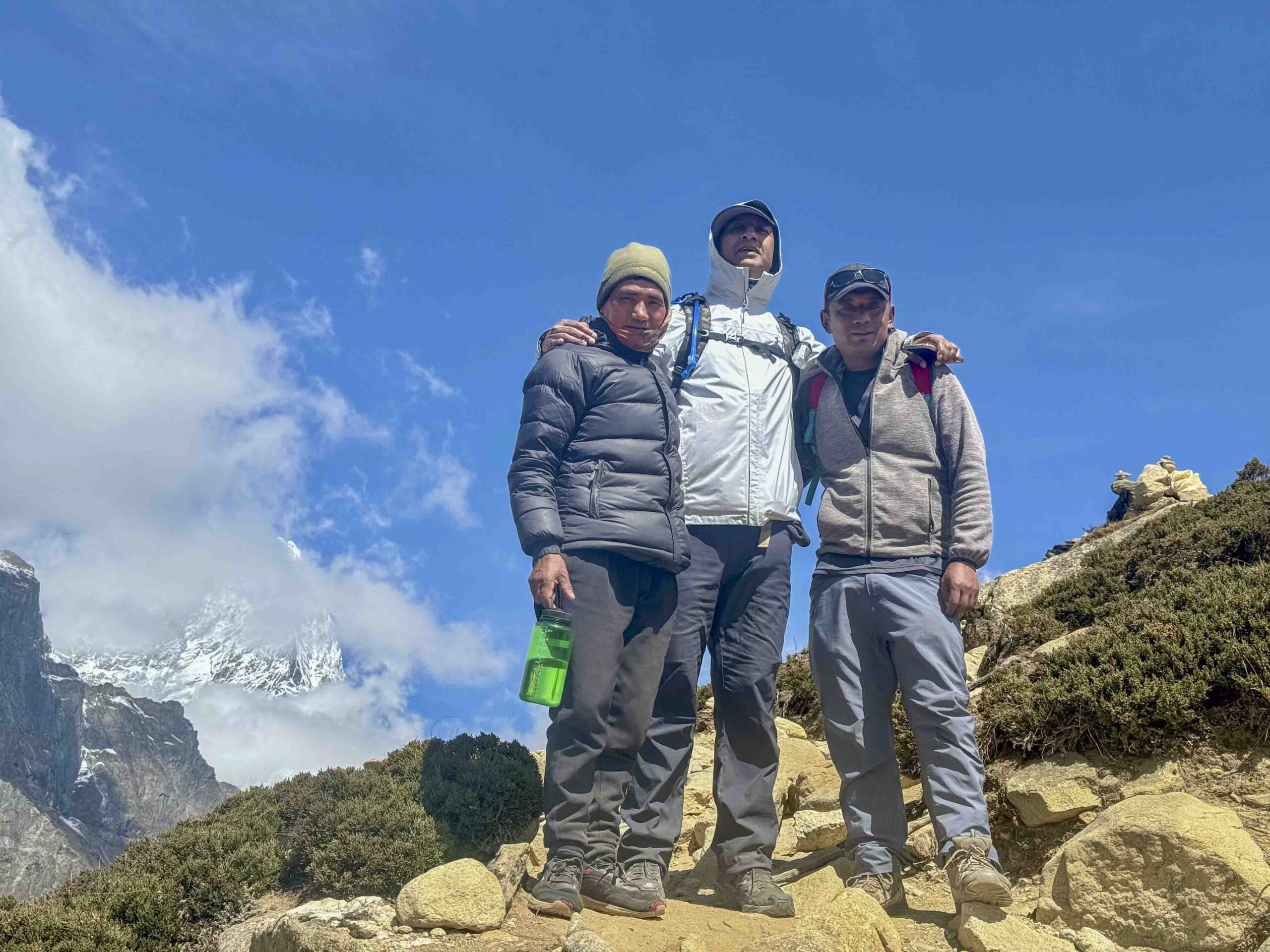
Along the way, I was struck not only by the majesty of Everest itself but by the warmth and hospitality of the Sherpa people, whose culture and resilience are as much a part of this mountain as the rock and snow.
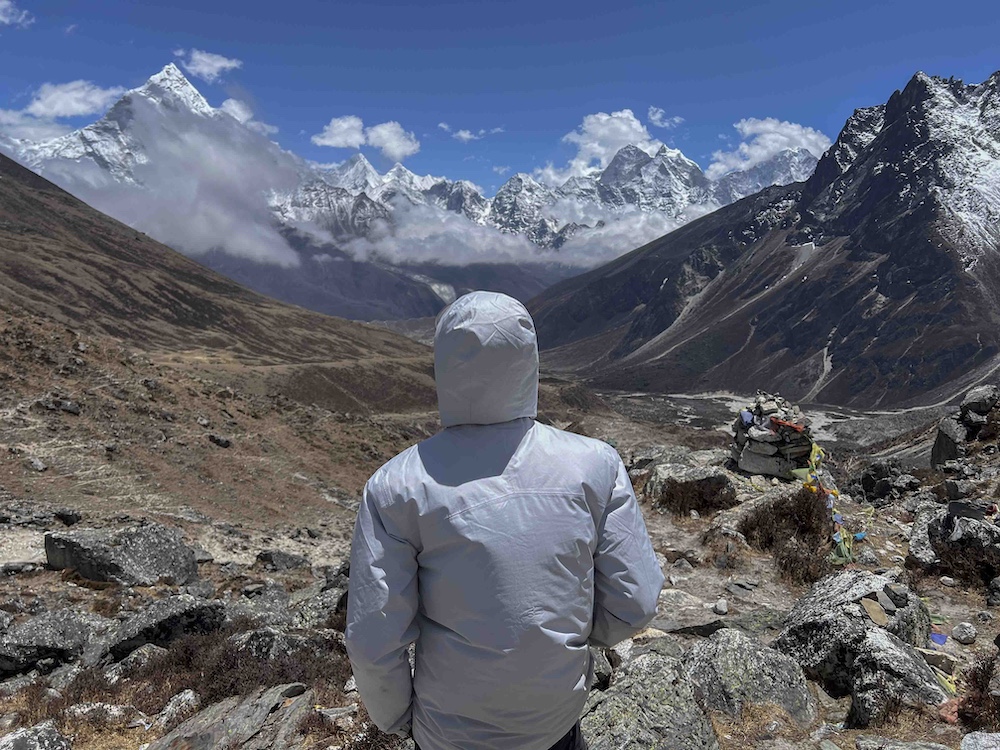
Top 10 Tips for Everest Base Camp Trek
The Everest Base camp (EBC)Trek is a demanding yet rewarding journey that requires thorough preparation and planning. Below is an expanded guide on the top ten tips, ensuring you make the most of your adventure while staying safe and comfortable.
Train Before the Trek
Physical and Mental Preparation: Engage in cardiovascular exercises to build your stamina. Strengthen your core and legs with squats, lunges, and step-ups to handle steep ascents and descents.
Endurance Hikes: Practice long walks or hikes with a backpack to simulate the trek’s demands. Gradually ramp up to 4-5 hours of hiking per day before starting the trek.
High-Altitude Readiness: If feasible, practice hiking or trekking at higher altitudes or steep inclines before heading to Nepal.
Plan for Acclimatization
Rest Days: Your itinerary should include acclimatization days in Namche Bazaar (3,440 m/11,286 ft) and Dingboche (4,410 m/14,468 ft). These are critical to helping your body adjust to the thinning air. Your trekking company will plan this for you.
Slow Ascent: Follow the “climb high, sleep low” rule by taking short hikes to higher altitudes during rest days and returning to a lower altitude for the night.
Watch for Symptoms: Be aware of altitude sickness signs like headaches, dizziness, nausea, and fatigue. If symptoms worsen, descend immediately.
Pack Light but Smart
Layered Clothing: Pack moisture-wicking base layers, insulated mid-layers, and waterproof outer layers for temperature variations. We carried 100% wool base layers which are anti-bacterial and moisture wicking.
Essential Gear: Items like a down jacket, gloves, a hat, a buff, and a pair of thermal socks are vital for colder altitudes. You can also rent down jackets and sleeping bags in Kathmandu.
Limit Weight: Aim to keep your backpack under 15 kg (33 lbs). Porters often have weight limits, so pack only essentials.
Stay Hydrated
Water Intake: Drink at least 3-4 liters daily. Staying hydrated helps combat altitude sickness and maintains your energy levels.
Avoid Alcohol: Alcohol can dehydrate your body and worsen altitude sickness symptoms. Avoid meat intake during the trek.
Safe Water: Use iodine purification tablets, or drink boiled water to avoid gastrointestinal issues.
Choose the Right Season
Spring ( March-May): This season offers blooming rhododendrons, stable weather, and moderate temperatures.
Autumn (September-November): Expect clear skies and stunning mountain views, making it the most popular trekking period.
Hire a good Trekking company
Guides and Porters: A professional guide enhances your safety and enriches your experience with local insights. Porters carry heavy loads, allowing you to trek comfortably. Ensure they are fairly compensated and treated respectfully.
We signed up with Sherpa Expedition and Trekking company which provided excellent service.
Pack High-Calorie Snacks
Energy Boost: Bring lightweight, calorie-dense snacks like energy bars, trail mix, dried fruits, and chocolates for quick refueling. Meals at teahouses are nourishing but may not always suffice for high-energy days.
Invest in Good Gear
Footwear: Comfortable, waterproof trekking boots with good ankle support are essential. Break them in before the trek to avoid blisters.
Sleeping Gear: A sleeping bag rated for extreme cold ensures a good night’s sleep in teahouses.
Headlamp: A reliable headlamp with extra batteries is invaluable for early-morning hikes or late night visits to the bathroom.
Be Prepared for Unpredictable Weather
Sudden Changes: The weather in the Himalayas is highly variable. Be prepared for rain, snow, or strong winds at any time.
Waterproof Layers: Always carry a waterproof jacket, pants, and a backpack cover to protect yourself and your belongings.
Enjoy the Journey, Not Just the Destination
Pause and Reflect: Take frequent breaks to absorb the surroundings, from cascading rivers to majestic peaks.
Interact Locally: Spend time with Sherpa families, visit monasteries, and learn about their way of life.
Photography: Capture memories but don’t forget to immerse yourself in the experience.
Note:
Toilets get more basic as you climb higher. Gain in elevation will be accompanied by lower oxygen levels and hence disrupted sleep, rapid drop in temperatures in the night, and less availability of water.
Namche Bazar is the last place you can enjoy the luxury of a hot shower. From here on you will have to make do with body wipes.
For anyone considering a trek to the Everest Base Camp, take the leap of faith. You will be glad you did.
For more travel stories read How to plan a American road trip covering the best National Parks.

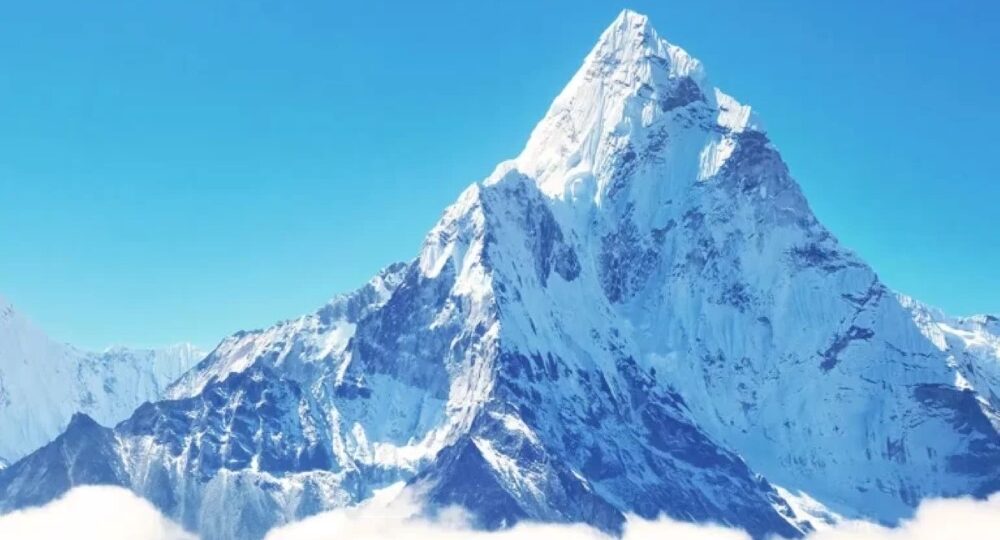
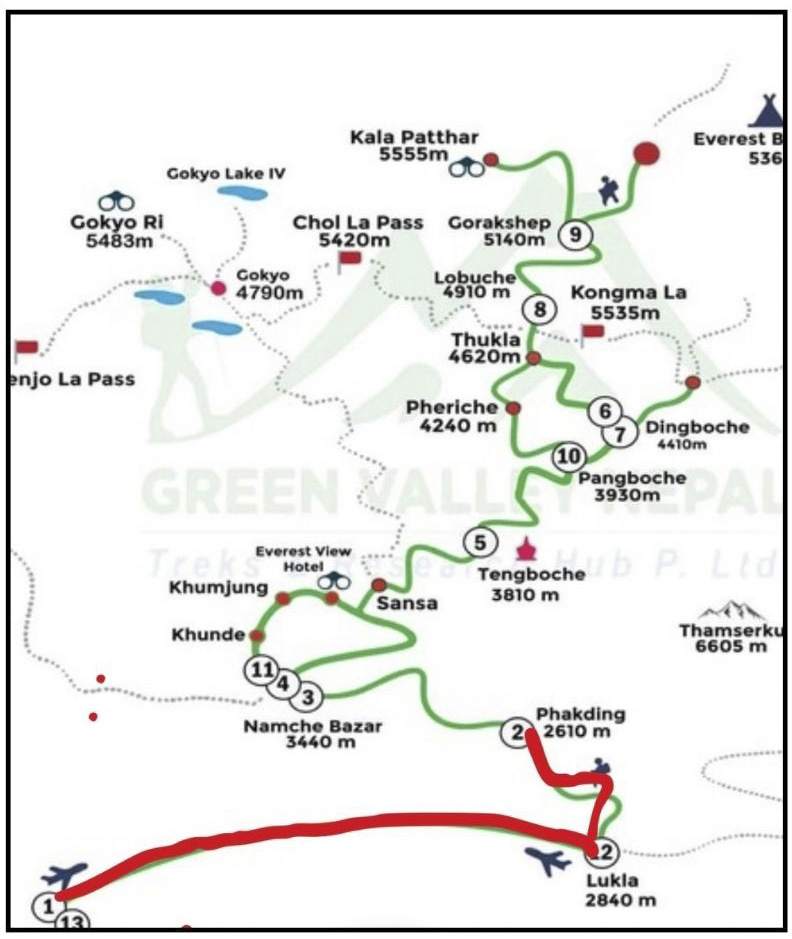 Day 2: Kathmandu to Lukla, then to Phakding (2,610m) 8562 feet
Day 2: Kathmandu to Lukla, then to Phakding (2,610m) 8562 feet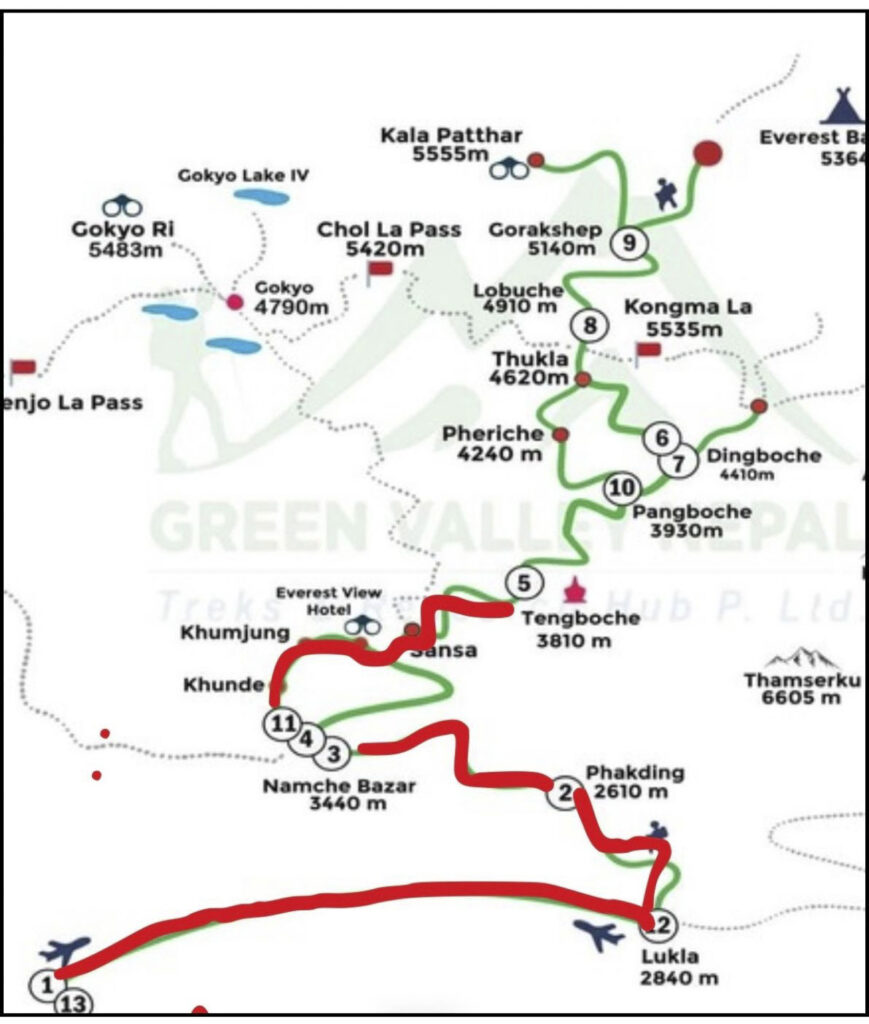 Day 5: Namche to Tengboche (3,810m) 12500 feet
Day 5: Namche to Tengboche (3,810m) 12500 feet